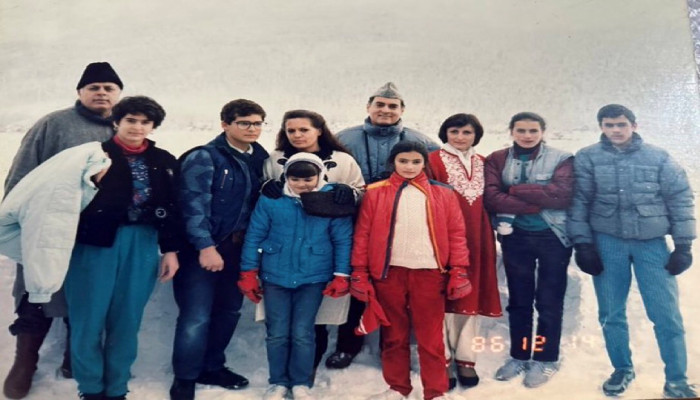Troubled Dark History Associated with a Throwback Photograph Posted by Safia Khan
- In Current Affairs
- 05:45 PM, Aug 26, 2024
- Nidhi Bahuguna
The election commission has announced the dates for the much-awaited Jammu & Kashmir assembly elections scheduled to be held in the month of September. JKNC (Jammu & Kashmir National Conference) released their party manifesto, which is seen by Nationalists as deeply troubling. Rahul Gandhi visited Srinagar to meet JKNC leaders and Safia Khan, daughter of Farooq Abdullah who posted a 1986 picture of the Gandhis with Abdullah family on a visit to Srinagar. Throwback pictures are normally nostalgic, but this picture brought back many troubled and dark moments of 1986 and its preceding years.
The picture was taken when Rajiv Gandhi was PM of India. He took oath post the assassination of Indira Gandhi. His takeover of the Prime Ministership was marked by very violent anti-Sikh riots. The Sikh Genocide was normalised with the infamous statement ‘When a large tree falls, the ground beneath shakes’.
The dark night of 2-3 December 1984 saw the horrific Bhopal gas tragedy. The initial attempts to cover up the enormity were followed by the escorting of Warren Anderson out of India, effectively blocking any judicial punishment of him.
The year 1985 saw the Kalahandi starvation deaths in Odisha. Initially, they were sought to be denied, but once international coverage began, the deaths made it to national news. Some efforts like free rations for children in each family were made, but the efforts were too little. The Kalahandi starvation deaths remained a blot on India’s soul. 1986 also saw the signing of the Bofors gun Deal, which blew up in 1987 due to allegations of a kickback. In the same year, Congress brought out an ordinance nullifying the Supreme Court’s decision on the Shah Bano case of a provision for the maintenance of divorced Muslim women. The Ordinance, which later became law, is often recognised as the moment when a secular government caved into Islamists and set the stage mainstreaming of Muslim personal law.
In 1986, the Anantnag district of Kashmir saw widespread anti-Hindu riots. After the death of Sheikh Abdullah in 1982, Farooq Abdullah became the Chief Minister. His brother-in-law, Gul Muhammad Shah broke away in 1984 and with the help of a few MLAs and the Congress Party formed the government and became CM. Also, GM Shah wanted to build a mosque on the premises of an ancient Hindu temple in the Jammu Secretariat. The locals of Jammu opposed this plan. Gul Shah as he was called, came to Srinagar and started the fake narrative of ‘Islam in danger’. Anantnag became the epicentre of these riots.
The riots began on 20 February 1986, in the village of Wanpoh, with the burning of Shiv temples. The riots continued till 8 March, when Kashmiri Pandits celebrated Shiv Ratri. These riots caused an exodus of Kashmiri Pandits to Udhampur and Jammu. Mufti Mohammad Sayeed was the MLA of the Anantnag constituency.
After the riots, Ghulam Mohammad Shah was removed as the Chief Minister on 7 March and President’s rule was imposed. Shri Jagmohan took over as the governor. Two events triggered these riots- rumours of damage to Al-Aqsa Mosque in Jerusalem and second was the opening of gates of a disputed structure at Ram Janamsthan in Ayodhya by Rajiv Gandhi. The riots were so intense that the Army had to be called out in many towns. The historic Akhara complex in Srinagar was set on fire.
This picture does not evoke nostalgia but brings back the sadness and despair of India and Jammu & Kashmir of that era. These two dynasts set in motion the Islamist terrorist takeover of Kashmir valley. By 1989, prominent Kashmiri pandits like PN Bhatt had been killed publicly. In the same snow-clad landscape, lakhs of Kashmiri Hindus left their homes overnight to become refugees in their own nation. The Abdullahs and Gandhis are meeting up in Srinagar to tie up another alliance for the 2024 elections, with the manifesto of JKNC promising a separate flag, restoration of Article 370, calling Shankaracharya hill as Takht-e-Suleiman, Hari Parbat as Kho-i-Maran, driving a dagger in the soul of the exiled Kashmiri pandits.
The time has come for the Nation to question their manifesto and expose the reality hidden behind such pictures.
Image provided by the author.







Comments